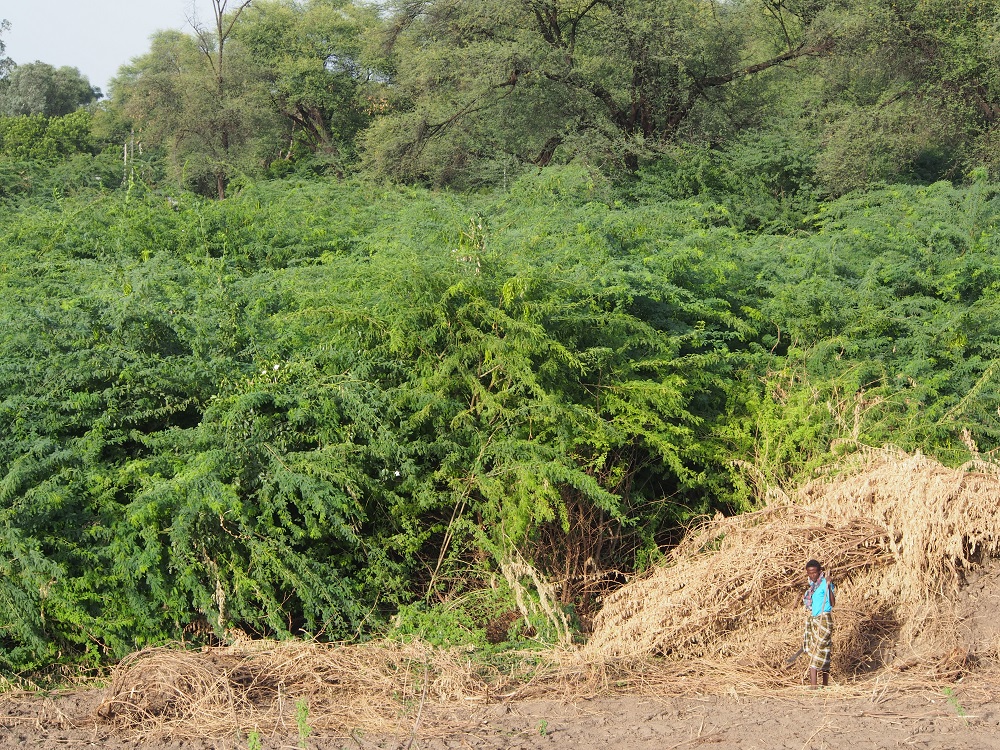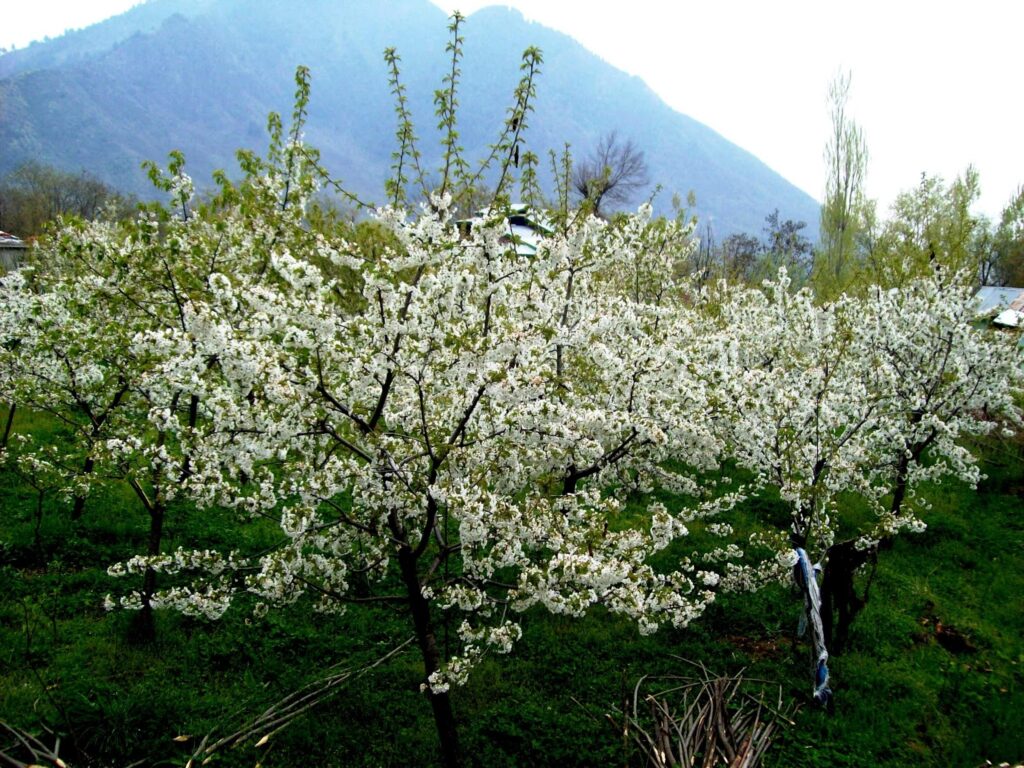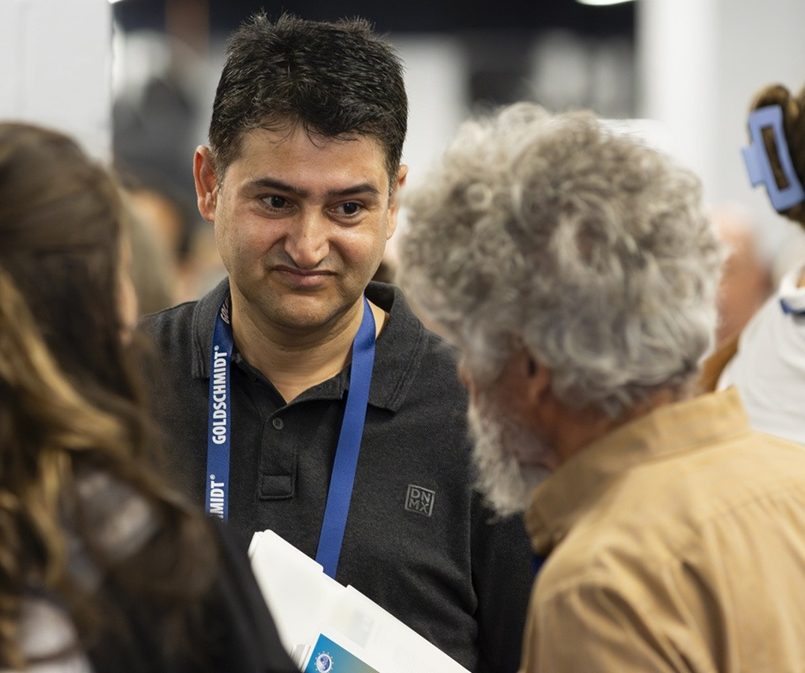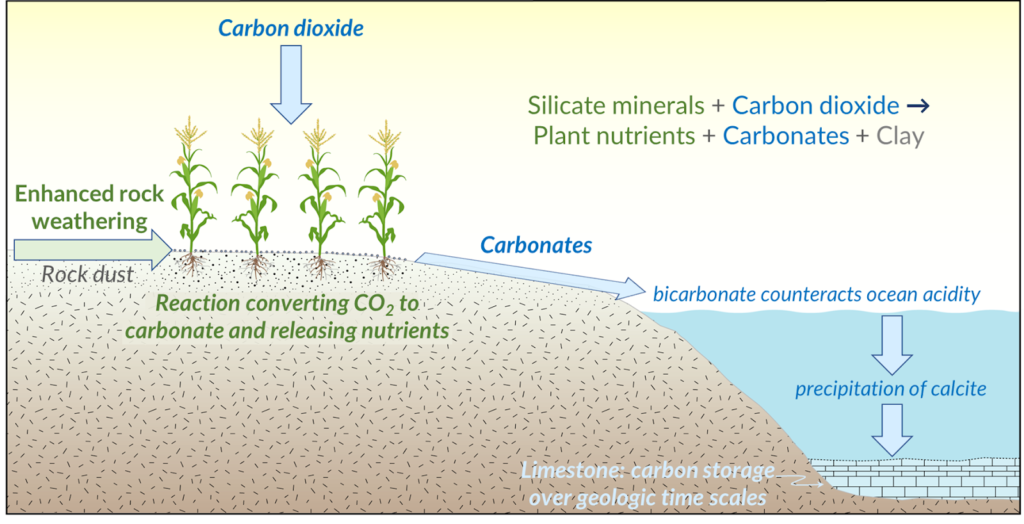From Kashmir to Chicago: Geological Survey of India’s Mir Takes ERW Vision Global
Kashmir. Photo by Autar Mota
As a child, Dr. Ishfaq Ahmad Mir did not realize the basalt rocks near his childhood home in Kashmir, India, would one day become central to his life’s work — and a vital tool in the fight against climate change and for food security.
With degrees in applied geology from Kashmir University and a Ph.D. in marine sciences from Goa University and now a senior geologist at the Geological Survey of India, Mir’s career has evolved from reconstructing past climates to addressing soil degradation and malnutrition caused by excessive pesticide use and synthetic fertilizers across India.
Inspired by the fertile basaltic rocks of his homeland and the Deccan Traps, Mir advocates for enhanced rock weathering (ERW), which uses basalt rock dust to enrich soils, sequester carbon and combat ocean acidification. By combining rock dust with biochar and compost, he proposes a scalable and sustainable solution to improve agriculture while reducing emissions.
His ERW research has garnered global attention, offering hope in the climate crisis. At this year’s Goldschmidt Conference in Chicago, where he attended with Remineralize the Earth (RTE) board director Tom Goreau, Mir presented ERW as a cost-effective and scalable solution to the climate crisis.
As a board advisor for RTE, Mir works closely with the organization and emphasizes the urgency of global collaboration to implement effective climate solutions at scale. Collaborating with RTE, he authored the study “India’s biogeochemical capacity to attain food security and remediate climate” in Springer journal Environmental Geochemistry and Health.
His path to ERW
Before enrolling in his Ph.D. program, Mir qualified for the Council of Scientific and Industrial Research’s National Eligibility Test for Junior Research Fellowship and Lectureship in earth, atmospheric, ocean and planetary sciences. He joined the Geological Survey of India in 2011 after taking the Union Public Service Commission’s Combined Geo-Scientist Exam during the final year of his Ph.D.
Mir was initially posted in Kashmir Valley and Ladakh before transferring to Karnataka, where he worked in the Western Ghats and Bangalore. During his postings, he repeatedly encountered arsenic-contaminated soils — first in Kashmir apple orchards and later in South Indian mango gardens.
He observed that pesticide use was damaging soils across the subcontinent — a densely populated region facing significant natural resource constraints. Intensive farming practices had depleted essential soil nutrients and drastically reduced the nutritional quality of food.
Determined to address the issue, Mir focused on the unbalanced use of synthetic fertilizers, which degrade soil quality and pollute aquatic ecosystems.
This led Mir to reflect on the fertile basaltic rocks of his youth. The Deccan Traps of Maharashtra and Central India produce some of the world’s finest basalts, often mined for construction and development projects. These activities generate aggregate byproducts in mines and quarries, which can be repurposed to enrich nutrient-deficient soils.
Although more research is needed to understand India’s ERW mineral deposits, Mir plans to launch pilot projects by 2025 to study the fertility of various rock types across the country. Recognizing that ERW is an interdisciplinary field, he envisions collaboration among government departments, policymakers and regulators as essential.
Why remineralization?
According to Mir, rock dust is affordable, locally available, and provides all essential soil nutrients while simultaneously sequestering atmospheric carbon. Rain absorbs carbon dioxide in the atmosphere, which when it falls to the ground reacts with rock dust to create carbonates that are washed into oceans, mitigating acidification. Accelerating this natural weathering process offsets the rapid pace of carbon emissions.
Further, when ground into fine powder, silicate rocks supply nutrients such as calcium, phosphorus, potassium and magnesium, along with trace elements essential for healthy plant growth. By contrast, synthetic fertilizers provide only nitrogen, phosphorus and potassium.
Mir also highlights the value of transforming biomass, such as invasive mesquite and agricultural waste, into biochar to reduce particulate pollution in areas like New Delhi. Produced through biomass pyrolysis, biochar can be combined with rock dust and organic compost to create a slow-release fertilizer that retains nutrients, captures volatile gases and provides a source of energy.
Plenty of potential
India has significant potential for ERW, with large basalt deposits, extensive forests, and a robust railway network to transport basaltic powders from mining sites, Mir said, making the subcontinent well-suited to scale up ERW and create economic opportunities for farmers through carbon credit programs.

ERW provides numerous benefits, including CO2 sequestration, improved soil structure and nutrient density, reduced ocean acidification, and enhanced tree vitality — which can help prevent forest fires.
Mir shared this low-cost Indian ERW potential with fellow scientists from around the world at the Goldschmidt Conference in Chicago in August. He said the global community should collaborate to unearth the best methods that are easily scalable and can be implemented quickly to combat climate change.
Next year, Mir will participate with Joanna Campe in the V Congresso Brasileiro De Rochagem in Piracicaba, Brazil. On July 10, 2025, he will be giving a presentation on Remineralizers and the FAO Sustainable Development Goal to end hunger, achieve food security and improve nutrition and promote sustainable agriculture.
There is discussion of the possibility of organizing a conference for next year focused on global south-to-south countries that would include Brazil, India, and countries across Africa. The conference would be based in Brazil, and Mir would play a central role, stressing the importance of geomapping for remineralization of the whole planet. Mir is taking on a bigger role in promoting remineralization and ERW in India and the global South.
Priyakshi Sarma is a freelance content creator based in Bengaluru, India. She holds a master’s degree in Environmental Science from Tezpur University, India. With five years of work experience as a researcher and content creator in various research organizations and non-profits in India and the US, she is passionate about writing on environmental issues and bringing them to the general public. She writes content on sustainability, climate change, and circular economy. Her content includes website content (blogs, articles), and LinkedIn posts. She began as a science writer for RTE in 2024 and is learning the art of writing popular science.
Carter Haydu is a senior content creator for King Abdullah University of Science and Technology (KAUST) in Saudi Arabia. Since 2012, he also has written about the Canadian energy sector for a Calgary-based trade publication. Carter has been a journalist since 2005, with much of his reporting delving into the environmental issues facing upstream oil and gas. He has written for Remineralize the Earth since 2018.
Support us on Patreon
Thank you for joining us today! Please become a member of RTE and support us on Patreon. Unlike many larger organizations, we work with a team of determined and passionate volunteers to get our message out. We aim to continue to increase the awareness of remineralization to initiate projects across the globe that remineralize soils, grow nutrient dense food, regenerate our forests’ and stabilize the climate – with your help! If you can, please support us on a monthly basis from just $2, rest assured that you are making a big impact every single month in support of our mission. Thank you!










Got something to say?